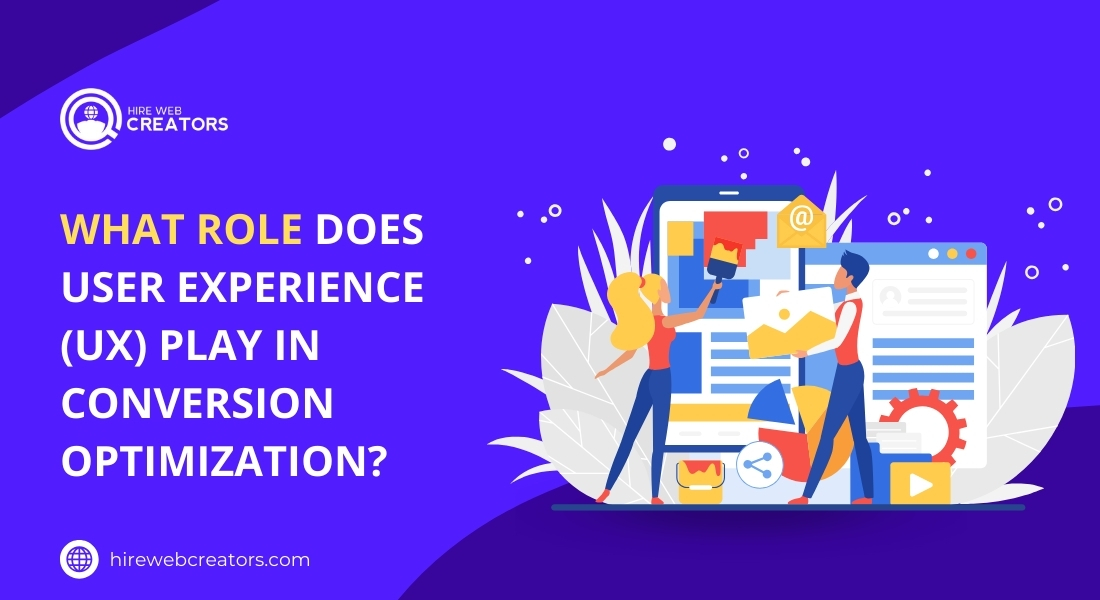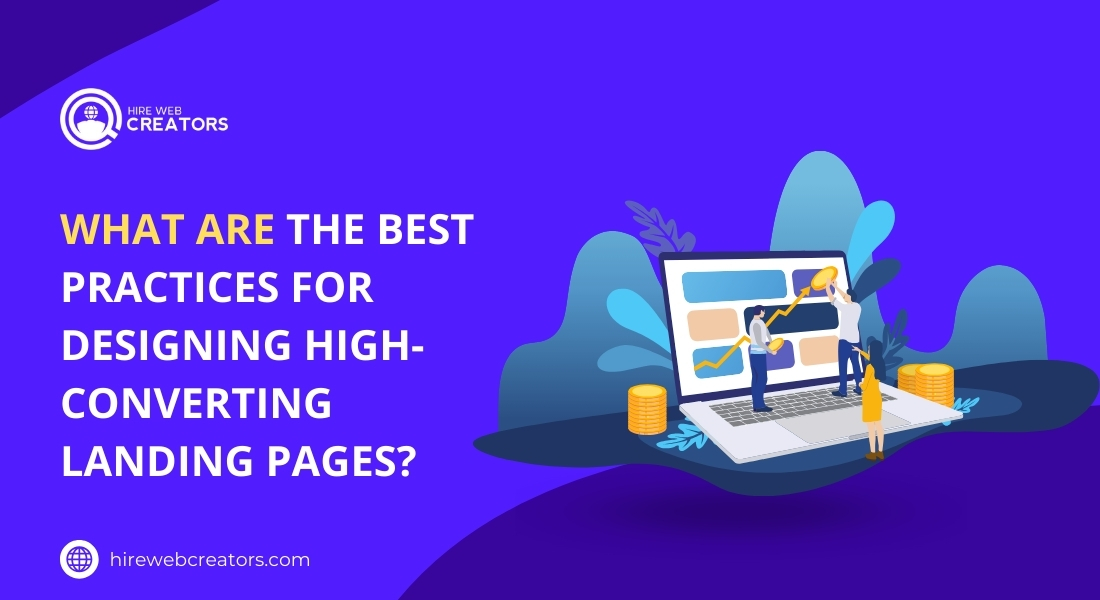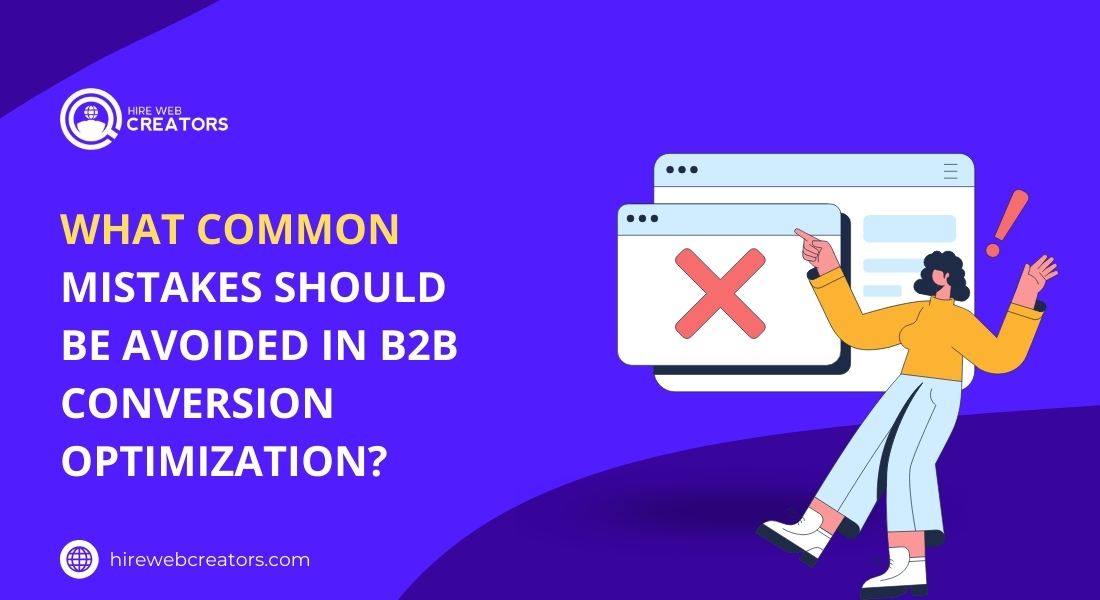

Conversion Optimization B2B: 7 Powerful Strategies for Massive Gains
Get ahead in Conversion optimization B2B. Our expert insights will help you optimize your website for maximum conversions and improved performance.
Mastering conversion optimization is essential for turning website visitors into loyal customers. Effective Conversion optimization B2B involves a strategic approach to enhance user experience, design compelling landing pages, and leverage data-driven insights to boost conversion rates. This guide delves into the key principles and best practices to transform your B2B website into a high-performing asset.
From understanding crucial metrics to implementing advanced techniques inspired by industry leaders like unbounce.com and vwo.com, this comprehensive guide provides actionable strategies to drive meaningful results. Whether you’re aiming to refine your A/B testing methods or personalize your site for greater impact, our expert advice will equip you with the tools needed to achieve and surpass your conversion goals.
What is Conversion Optimization for B2B Websites?
Conversion optimization for B2B websites is a critical strategy designed to enhance the effectiveness of a site in converting visitors into leads or customers. It involves a series of systematic actions and improvements aimed at increasing the conversion rate, which is the percentage of visitors who complete a desired action, such as filling out a contact form or making a purchase. Effective Conversion optimization B2B requires a deep understanding of both user behavior and the nuances of B2B sales cycles.

One of the key elements in Conversion optimization B2B is the identification and optimization of conversion pathways. These pathways are the routes that users take from their initial visit to completing a conversion goal. To optimize these pathways, it’s essential to analyze user data and identify any obstacles or friction points that may hinder conversions. This often involves using tools such as heat maps, user session recordings, and analytics platforms to gain insights into user interactions and behaviors. By addressing these obstacles, businesses can create a more seamless and intuitive user experience that drives higher conversion rates.
Incorporating Conversion optimization B2B strategies also involves testing and iterating on different elements of the website. A/B testing, for example, allows businesses to compare different versions of a webpage to determine which one performs better in terms of conversion rates. This iterative process of testing and refining various elements, such as headlines, call-to-action buttons, and overall design, helps in identifying the most effective strategies for improving conversions. By continuously analyzing performance data and making data-driven adjustments, businesses can achieve significant improvements in their conversion optimization efforts.
This comprehensive approach to Conversion optimization B2B not only enhances the user experience but also aligns with the broader goals of increasing sales and driving growth. By systematically analyzing user behavior, optimizing conversion pathways, and employing rigorous testing methodologies, B2B websites can achieve higher conversion rates and greater overall success.
Why is Conversion Optimization Crucial for B2B Businesses?
Conversion optimization is crucial for B2B businesses because it directly impacts the effectiveness of a website in achieving its marketing and sales goals. In the B2B sector, where the sales cycle is often longer and more complex, optimizing conversions can significantly enhance lead generation and drive revenue growth. By focusing on Conversion optimization B2B, businesses can improve their ability to attract, engage, and convert high-quality leads, leading to increased sales and a better return on investment.
B2B businesses face unique challenges in conversion optimization due to the specific needs and behaviors of their target audience. Unlike B2C, where impulse buys are common, B2B decisions often involve multiple stakeholders and a lengthy decision-making process. Effective Conversion optimization B2B addresses these challenges by creating a tailored user experience that resonates with business customers. This includes providing detailed information, addressing common objections, and offering solutions that align with the specific needs of the business buyer.
Investing in Conversion optimization B2B is also essential for staying competitive in the market. As more businesses recognize the value of optimizing their websites, those that fail to implement effective strategies may find themselves at a disadvantage. By continuously refining their conversion strategies and leveraging insights from industry best practices, B2B companies can stay ahead of the competition and ensure their website remains a powerful tool for generating leads and driving sales.
What Are the Key Principles of Conversion Rate Optimization (CRO)?
Conversion Rate Optimization (CRO) is grounded in several key principles that drive its effectiveness. The essence of CRO involves understanding user behavior and making data-driven changes to improve conversion rates. These principles focus on enhancing the user experience, addressing user pain points, and aligning website elements with the goals of the target audience. For effective Conversion optimization B2B, these principles are crucial in creating a streamlined and persuasive user journey that encourages visitors to take desired actions.

One fundamental principle of CRO is the emphasis on data-driven decision-making. This involves using analytics and user feedback to identify areas for improvement and measure the impact of changes. Tools such as Google Analytics, heat maps, and A/B testing provide valuable insights into user behavior and preferences. Implementing Conversion optimization B2B strategies based on this data helps in fine-tuning website elements like landing pages, forms, and calls-to-action to better meet user needs and drive higher conversion rates.
Another important principle is the importance of user-centric design. In Conversion optimization B2B, designing with the user in mind means creating a website that is intuitive, engaging, and easy to navigate. This includes optimizing page load times, ensuring mobile responsiveness, and providing clear and compelling content. By prioritizing the user experience and addressing potential barriers to conversion, businesses can significantly enhance their website’s effectiveness and achieve better conversion outcomes.
How Can You Identify Conversion Goals for B2B Websites?
Identifying conversion goals for B2B websites involves defining what constitutes a successful outcome for the business. Conversion goals can vary depending on the business model, but they generally focus on key actions that drive revenue and growth. Effective Conversion optimization B2B requires a clear understanding of these goals and aligning website elements to support them. Goals may include lead generation, form submissions, or sales inquiries, and identifying them is the first step in optimizing a website for better performance.
One method for identifying conversion goals is to analyze the sales funnel and understand the customer journey. By mapping out the stages a visitor goes through before making a decision, businesses can pinpoint critical touchpoints where conversion optimization and B2B efforts can be most impactful. This involves assessing user behavior at each stage of the funnel and determining which actions are most valuable to the business. For example, if generating qualified leads is a primary goal, then optimizing landing pages and lead capture forms becomes a key focus area.
It’s also essential to align conversion goals with overall business objectives. Effective Conversion optimization B2B means setting goals that directly contribute to achieving broader business targets, such as increasing revenue or expanding market reach. By ensuring that website conversion goals are in sync with these objectives, businesses can create a more cohesive strategy that drives meaningful results and supports long-term growth.
What Role Does User Experience (UX) Play in Conversion Optimization?
User Experience (UX) plays a pivotal role in Conversion optimization B2B by shaping how users interact with a website and influencing their likelihood of completing a desired action. A positive UX is crucial for keeping visitors engaged and guiding them smoothly through the conversion process. Key aspects of UX include site navigation, page load speed, and the overall design, all of which contribute to the effectiveness of Conversion optimization B2B efforts.

Effective UX design involves creating a user-friendly interface that makes it easy for visitors to find information and take action. In Conversion optimization B2B, this means ensuring that critical elements such as call-to-action buttons, forms, and product information are easily accessible and presented. A well-designed UX reduces friction points and enhances the likelihood of visitors completing conversion actions, such as requesting a demo or signing up for a newsletter.
User feedback and usability testing are essential components of optimizing UX for conversions. Gathering insights from real users helps in identifying areas for improvement and making informed decisions about design changes. For Conversion optimization B2B, leveraging user feedback to refine website elements and address pain points can significantly enhance the overall user experience and drive higher conversion rates.
How Can A/B Testing Improve B2B Website Conversions?
A/B testing is a powerful tool for improving B2B website conversions by allowing businesses to compare different versions of a webpage and determine which one performs better. This method involves creating two or more variations of a webpage element, such as a headline or call-to-action button, and testing them with different segments of users. The goal of A/B testing in Conversion optimization B2B is to identify which version yields higher conversion rates and make data-driven decisions to enhance website performance.
To conduct effective A/B testing, it is important to establish clear hypotheses and metrics for success. For instance, if the goal is to increase form submissions, variations might include different form designs or calls to action. By analyzing which version of the form generates more submissions, businesses can gain insights into what resonates with their audience and apply these findings to improve their overall conversion strategy. Effective Conversion optimization B2B relies on this iterative process of testing and refinement to achieve optimal results.
A/B testing also supports a culture of continuous improvement by providing actionable insights into user preferences and behavior. By regularly testing and optimizing different elements of the website, businesses can stay agile and responsive to changing user needs and market conditions. This ongoing process of experimentation and adaptation is essential for maintaining high conversion rates and achieving long-term success in B2B marketing.
What Are the Best Practices for Designing High-Converting Landing Pages?
Designing high-converting landing pages is a critical aspect of Conversion optimization B2B, as these pages are often the first point of contact for potential leads. Effective landing page design focuses on creating a clear, compelling, and user-friendly experience that encourages visitors to take specific actions, such as filling out a form or requesting more information. Best practices for designing high-converting landing pages include a strong emphasis on relevance, clarity, and persuasion.

A key practice in creating high-converting landing pages is to ensure that the content is directly aligned with the visitor’s expectations and the campaign objectives. This involves using targeted messaging that speaks to the pain points and needs of the B2B audience. Effective Conversion optimization B2B requires crafting headlines and copy that communicate the value proposition and benefits of the offer. Additionally, including relevant visuals and testimonials can enhance credibility and appeal.
Another important aspect is the design and layout of the landing page. For Conversion optimization B2B, it is essential to create a visually appealing and easy-to-navigate page that minimizes distractions and focuses on the conversion goal. This includes using a clean and simple design, strategically placing calls-to-action, and ensuring that forms or other interactive elements are user-friendly. By following these best practices, businesses can significantly increase the effectiveness of their landing pages and drive better conversion outcomes.
How Does Personalization Impact Conversion Rates?
Personalization plays a significant role in Conversion optimization B2B by tailoring the user experience to meet the specific needs and preferences of individual visitors. When a website offers personalized content and recommendations, it enhances relevance and engagement, leading to higher conversion rates. Personalization involves using data and insights to create a more customized experience that resonates with the target audience.
One way personalization impacts conversion rates is by delivering targeted content based on user behavior and preferences. For example, a B2B website might show different product recommendations or case studies based on the visitor’s industry or previous interactions. Effective Conversion optimization B2B leverages these personalized elements to create a more relevant and engaging experience that encourages visitors to take desired actions, such as requesting a demo or signing up for a trial.
Another aspect of personalization is addressing individual user pain points and needs. By analyzing user data and segmenting audiences, businesses can provide tailored solutions and messaging that address specific challenges faced by their target market. This approach not only enhances the user experience but also increases the likelihood of conversions by presenting solutions that are directly relevant to the visitor’s situation.
What Metrics Should You Track to Measure Conversion Success?
Tracking the right metrics is essential for measuring the success of Conversion optimization B2B efforts. Metrics provide valuable insights into how well a website is performing in terms of achieving its conversion goals and where improvements can be made. Key metrics to monitor include conversion rate, bounce rate, and average session duration, each of which offers important information about user behavior and website effectiveness.
Conversion rate is a primary metric for evaluating the success of Conversion optimization B2B. It represents the percentage of visitors who complete a desired action, such as filling out a form or making a purchase. Monitoring this metric helps in assessing the overall effectiveness of conversion strategies and identifying areas for improvement. For example, a low conversion rate might indicate issues with the website’s design or user experience that need to be addressed.
Additional metrics, such as bounce rate and average session duration, provide further context for understanding user engagement. Bounce rate measures the percentage of visitors who leave the site after viewing only one page, while average session duration tracks how long users spend on the site. High bounce rates or low session durations can signal problems with content relevance or user experience, highlighting areas where Conversion optimization B2B efforts may need to be adjusted.
How Can You Use Data from unbounce.com to Enhance Your Conversion Strategies?
Data from unbounce.com can provide valuable insights for enhancing Conversion optimization B2B strategies. Unbounce offers a range of tools and resources designed to help businesses create and optimize high-converting landing pages. By leveraging data and best practices from unbounce.com, businesses can refine their conversion strategies and improve the effectiveness of their B2B websites.
One way to use data from unbounce.com is by utilizing its A/B testing capabilities to evaluate different landing page variations. Unbounce provides robust A/B testing features that allow businesses to test different headlines, designs, and calls to action to determine which elements drive better conversion rates. Implementing insights gained from these tests helps in making data-driven decisions and optimizing landing pages for maximum impact.
Another useful resource from unbounce.com is its collection of industry benchmarks and best practices. These resources offer guidance on effective design elements, conversion tactics, and performance metrics. By applying these best practices to Conversion optimization B2B efforts, businesses can align their strategies with proven techniques and industry standards, leading to improved results and higher conversion rates.
What Insights from vwo.com Can Help Optimize Your B2B Website?
Insights from vwo.com offer valuable guidance for optimizing B2B websites through a range of conversion optimization tools and methodologies. VWO (Visual Website Optimizer) provides a comprehensive suite of features designed to help businesses analyze user behavior, conduct A/B tests, and implement effective conversion strategies. Utilizing these insights can significantly enhance Conversion optimization B2B efforts and drive better performance.
One key insight from vwo.com is the importance of user behavior analysis in understanding how visitors interact with a website. VWO’s tools, such as heat maps and session recordings, provide detailed visualizations of user behavior, allowing businesses to identify areas where users may encounter difficulties or drop off. By addressing these issues and making targeted improvements, businesses can enhance the user experience and boost conversion rates.
VWO.com also offers robust A/B testing and multivariate testing capabilities that enable businesses to experiment with different website elements and measure their impact on conversions. By leveraging these testing features, businesses can gain insights into which variations perform best and make data-driven adjustments to optimize their B2B websites. Implementing findings from vwo.com helps in refining conversion strategies and achieving better results.
What Common Mistakes Should Be Avoided in B2B Conversion Optimization?
Avoiding common mistakes in B2B conversion optimization is crucial for achieving successful outcomes and maximizing the effectiveness of a website. Common errors can undermine conversion efforts and prevent businesses from reaching their goals. Key mistakes to avoid include neglecting user experience, failing to set clear goals, and not utilizing data effectively for decision-making.

One prevalent mistake in Conversion optimization B2B is overlooking the importance of user experience. A website that is difficult to navigate or has confusing design elements can frustrate visitors and lead to lower conversion rates. Ensuring a seamless and intuitive user experience is essential for keeping visitors engaged and encouraging them to complete desired actions.
Another mistake is not setting specific and measurable conversion goals. Without clear goals, it becomes challenging to assess the effectiveness of optimization efforts and make informed improvements. Defining precise goals, such as increasing lead form submissions or improving click-through rates, helps in focusing optimization efforts and measuring success more effectively.
Failing to leverage data for optimization is also a common error. Data-driven decision-making is critical for identifying areas of improvement and understanding user behavior. Businesses should utilize analytics, A/B testing, and user feedback to gather insights and make informed changes. Ignoring these data sources can result in missed opportunities for enhancing Conversion optimization B2B strategies and achieving better results.
How Can You Continuously Improve Your Conversion Optimization Efforts?
Continuously improving conversion optimization efforts is essential for maintaining high performance and achieving long-term success. This ongoing process involves regularly evaluating and refining strategies based on data, user feedback, and industry trends. Key practices for continuous improvement include regular testing, staying updated with best practices, and incorporating user insights into optimization strategies.
Regular testing is a fundamental practice for enhancing Conversion optimization B2B. Conducting A/B tests and multivariate tests allows businesses to experiment with different elements and identify which variations drive better conversion rates. By consistently testing and iterating on website elements, businesses can adapt to changing user preferences and market conditions, leading to ongoing improvements in conversion performance.
Staying updated with industry best practices and trends is also crucial for continuous improvement. The field of conversion optimization is dynamic, with new techniques and tools emerging regularly. Businesses should stay informed about the latest developments and incorporate relevant best practices into their strategies to ensure they remain competitive and effective.
Incorporating user insights and feedback into optimization efforts is another key practice for refining web services. Regularly gathering and analyzing user feedback helps in identifying areas for improvement and making informed decisions about changes. By continuously listening to users and adapting strategies based on their needs and preferences, businesses can enhance the overall effectiveness of their Conversion optimization B2B efforts.
In conclusion, Effective Conversion optimization B2B is crucial for transforming a website into a powerful tool for generating leads and driving business growth. By understanding and implementing key strategies such as optimizing conversion pathways, enhancing user experience, and leveraging data-driven insights, businesses can significantly improve their conversion rates. The principles of Conversion optimization B2B, including data-driven decision-making and user-centric design, provide a robust framework for achieving higher performance and meeting business goals.
As the digital landscape continues to evolve, continuously refining and adapting conversion strategies is essential for maintaining a competitive edge. Utilizing insights from industry leaders and tools like unbounce.com and vwo.com can further enhance these efforts. By staying informed about best practices and incorporating user feedback, businesses can achieve sustained success in their Conversion optimization B2B initiatives and drive meaningful results.
